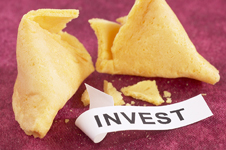Understanding Return on Investment
 One of the most essential steps to successfully investing money is having a good understanding of the concept of return on investment.
One of the most essential steps to successfully investing money is having a good understanding of the concept of return on investment.
If you are an investor, you will either invest for capital gains; that is buying an asset now in the hope that you will sell it in future for a profit, or for income and cash flow in the form of interest or dividend.
In this article I will focus on the latter motive and give you a fundamental understanding of how you can determine your return on a given investment.
For the purposes of this article, we shall restrict investments to three broad categories:
- Stocks, options, bonds and other financial instruments
- Investment property or real estate, and;
- A business of your own
Before you invest money, you need to understand that not all investments are created equal.
Being able to compute and interpret the return on investment on competing ventures enables you to choose the one that is most appropriate for you given your investment targets.
A few investment myths…
First we have to do away with some myths that can actually lead you to make erroneous investment decisions.
The first myth is that of a ‘set and forget’ investment.
The underlying promise here is that you put money aside and it keeps earning you a return of your choice indefinitely without any single effort on your part.
All investments that can be traded in a financial market will always be subjected to price fluctuations which will have a direct impact on their value, and your earnings.
However, the initial amount of money you invest (or your seed capital) may or may not be affected, depending on the type of investment you have selected.
When you chose an investment that has the potential to wipe out your seed capital, you need to pay even closer attention to the various techniques you can use to hedge against this risk.
The second myth is the higher the risk, the higher the return. Although this is what I learnt in business school, I have come to discover that it is not entirely true, largely because risk is a matter of perception.
What Warren Buffet perceives to be a risk-free investment could prove to be a very risky investment for a novice.
Your lack of experience will not warrant a high return for a particular investment simply because the risk is high for you.
Government securities are perceived to be low risk investments.
However, since they are a tool for monetary policy, the government can deliberately increase the interest rate to reduce the amount of money in circulation at a given time.
The risk will therefore be low albeit with a very high return.
Return on Investment
The return on investment can be described as the price of money to an investor, and the cost of money to a borrower.
If you invest $100,000 in investment A and get back $10,000 every year, your annual return on investment is 10%.
Alternatively, if you invest $100,000 in investment B and get back $5,000 every year, your annual return on investment is 5%.
All factors being equal, Investment A has a better return than investment B.
A key factor to consider is whether your seed capital (the $100,000) is at risk during the investment period.
If you Invest $100,000 in buying 2,500 shares in Company XYZ, each share will be purchased at $40 per share ($100,000 /2,500) earning you 10% per annum.
However, if the share price were to drop to $20 per share, your seed capital would have now dropped to $50,000 and even if the company was able to sustain 10% return per annum, you would only earn $5,000 at the end of that year.
It therefore pays to focus on investments with a high return offering maximum protection to your seed capital.

Leave a Reply